
Side chair by William Savery, Philadelphia, Pennsylvania, ca. 1760. Maple. H. 41", W. 21 3/8", D. 20 3/4". (Courtesy, Dallas Auction Gallery.) This chair has Savery’s first label on the outside of the stay rail.
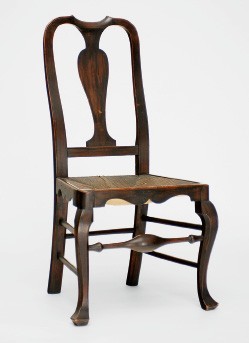
Side chair by William Savery, Philadelphia, Pennsylvania, ca. 1765. Maple. H. 41", W. 19 1/2", D. 15". (Courtesy, State Museum of Pennsylvania, Pennsylvania Historical and Museum Commission.) This chair has Savery’s -second label on the outside of the stay rail.
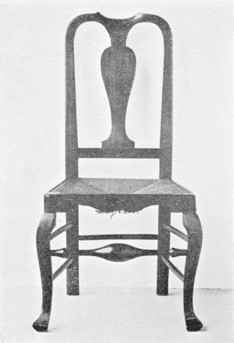
Side chair by William Savery, Philadelphia, Pennsylvania, 1760–1770. Woods and dimensions not recorded. (From “A Chair by William Savery,” Bulletin of the Pennsylvania Museum 18, no. 74 [February 1923]: 3.) This chair has an unspecified label of William Savery on the outside of the stay rail.

Side chair by William Savery, Philadelphia, Pennsylvania, ca. 1765. Maple. H. 36", W. 21", D. 18". (Courtesy, Bernard and S. Dean Levy, Inc.) This chair has Savery’s second label on the outside of the stay rail.
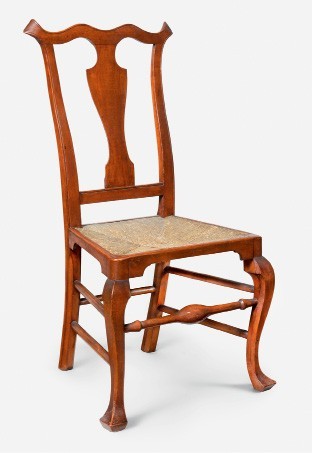
Side chair by William Savery, Philadelphia, Pennsylvania, ca. 1775. Maple with Atlantic white cedar. H. 40 1/8", W. 21 7/8", D. 19 3/4". (Courtesy, Dietrich American Foundation; photo, Gavin Ashworth.) This chair has Savery’s fifth label on the outside bottom of the rush seat.
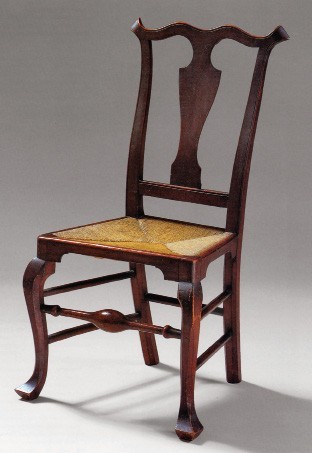
Side chair by William Savery, Philadelphia, Pennsylvania, ca. 1770. Maple. H. 40 1/4". (Important Americana [New York: Sotheby’s, January 16–17, 1999], lot 765.) This chair has Savery’s third label on the outside of the stay rail.

Side chair attributed to William Savery, Philadelphia, Pennsylvania, 1755–1770. Maple. H. 40", W. 22 1/4", D. 20". (Private collection; photo, Gavin -Ashworth.)
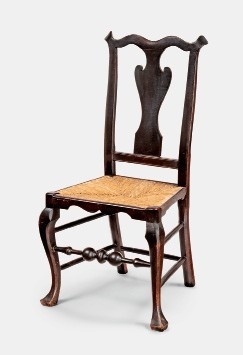
Side chair, Philadelphia, Pennsylvania, 1745–1765. Maple. H. 41", W. 21 1/4", D. 19". (Private collection; photo, Gavin Ashworth.)

Leg comparison of the chairs illustrated in figs. 7 and 8.

Armchair, Philadelphia, Pennsylvania, 1740–1750. Maple. H. 41 3/4", W. 25 1/2", D. 23 1/4". (Courtesy, Winterthur Museum.) This chair has a splint seat.
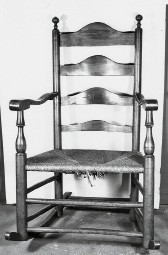
Armchair by William Savery, Philadelphia, Pennsylvania, ca. 1765. Maple. Dimensions not recorded. (Courtesy, Winterthur Decorative Arts Photographic Collection, 64.1766.) This chair has Savery’s second label on the outside of the second lowest slat (at arm level).
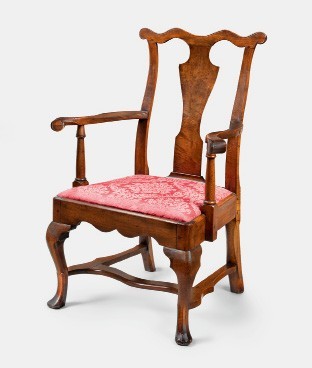
Armchair by William Savery, Philadelphia, Pennsylvania, ca. 1765. Maple. H. 39 1/4", W. 28 1/4", D. 22". (Private collection; photo, Gavin Ashworth.) This chair has Savery’s second label on the outside of the rear seat rail.
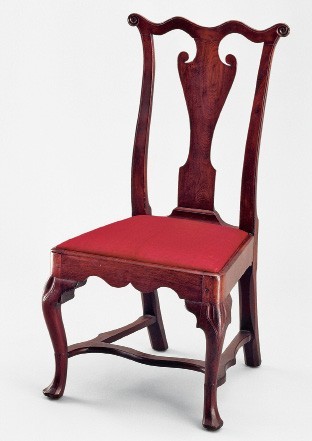
Side chair by William -Savery, Philadelphia, Pennsylvania, ca. 1765. Walnut. H. 39", W. 21", D. 20 1/4". (Courtesy, Colonial Williamsburg.) This chair has Savery’s second label on the outside of the rear seat rail.

Couch or daybed, Philadelphia, Pennsylvania, 1745–1765. Walnut. H. 40 1/2", L. 77", W. 26". (Courtesy, Philadelphia Museum of Art.)
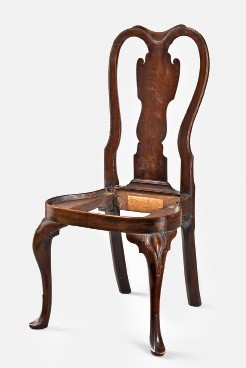
Side chair attributed to Edward Wright, Philadelphia, Pennsylvania, ca. 1749. Walnut. H. 40", W. 19 3/4", D. 20 1/2". (Courtesy, Philip H. Bradley Co.; photo, Gavin Ashworth.)
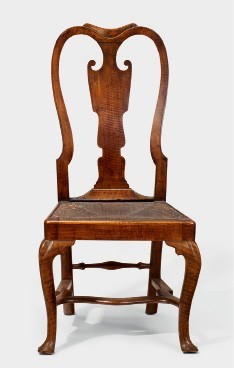
Side chair, Philadelphia, Pennsylvania, 1745–1760. Maple. H. 42". (Courtesy, Christie’s.) This chair has a history of ownership in the Scattergood family.
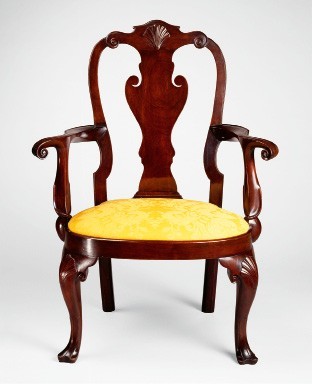
Armchair by William Savery, Philadelphia, Pennsylvania, ca. 1765. Walnut. H. 42 1/2", W. 31", D. 21". (Courtesy, Brooklyn Museum.) This chair has Savery’s second label on the outside of the rear seat rail.
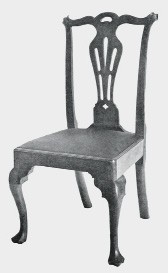
Side chair by William Savery, Philadelphia, Pennsylvania, ca. 1770. Woods and dimensions not recorded. (The James Curran Collection of Rare Eighteenth Century American Furniture [Philadelphia: March 11–12, 1940], lot 297.) This chair bears Savery’s third label, but its location is not specified.

Armchair by William Savery, Philadelphia, Pennsylvania. 1770–1775. Walnut. H. 40", W. 29 1/4", D. 22 1/2". (Courtesy, Winterthur Museum.) This chair has Savery’s fourth label on the inside of the rear seat rail.

Armchair by William Savery, Philadelphia, Pennsylvania, ca. 1780. Mahogany. H. 37 3/4", W. 30 1/2", D. 24 1/8". (Courtesy, Winterthur Museum.) This chair has Savery’s seventh label on the inside of the rear seat rail.

Side chair by Thomas Tufft, Philadelphia, Pennsylvania, 1773–1785. Mahogany. H. 38 3/4", W. 20 7/8", D. 23 3/4". (Courtesy, Winterthur Museum.) This chair has Tufft’s label on the inside of the rear seat rail.
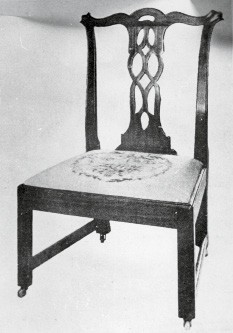
Side chair by William Savery, Philadelphia, Pennsylvania, ca. 1770. Woods and dimensions not recorded. (William M. Hornor Jr., “William Savery, Chairmaker and Joiner,” Antiquarian [July 1930]: 31.) This chair has Savery’s third label, but its location is not specified.

Side chair by William Savery, Philadelphia, Pennsylvania, ca. 1775. Walnut. H. 39". (Courtesy, Sack Family Archive, Yale University Art Gallery.) This chair has Savery’s fifth label on the inside of the rear rail.
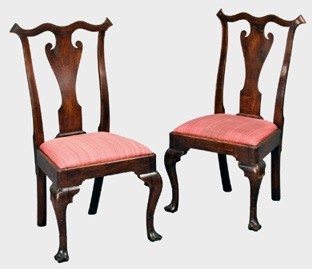
Side chairs by William Savery, Philadelphia, Pennsylvania, ca. 1775. Walnut. H. 40", W. 21 3/8", D. 20". (Courtesy, Dallas Auction Gallery.) The left chair has Savery’s fifth label on the inside of the rear seat rail.
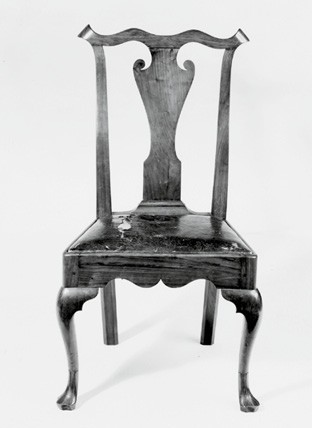
Side chair by William Savery, Philadelphia, Pennsylvania, 1765–1780. Walnut. H. 39 1/2". (Courtesy, Sack Family Archive, Yale University Art Gallery.) This chair has the chalk inscription “Savery” on the slip seat. The seat has its original leather upholstery.

Detail showing the chalk inscription on the slip seat of the chair (left) illustrated in fig. 24.
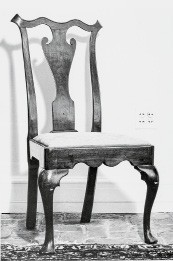
Side chair attributed to William Savery, Philadelphia, Pennsylvania, 1765–1780. Woods and dimensions not recorded. (Courtesy, Winterthur Decorative Arts Photographic Collection, 1976.815.) This chair has unidentified label fragments.
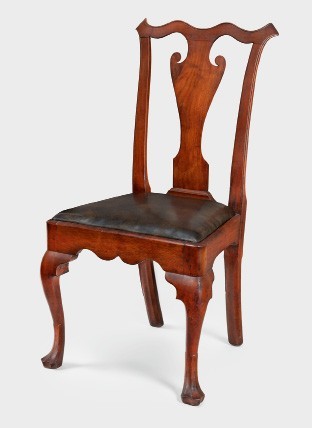
Side chair attributed to William Savery, Philadelphia, Pennsylvania, 1765–1775. Walnut. H. 38 1/2", W. 20 1/2", D. 191/2". (Courtesy, Harriton House, Bryn Mawr, Pennsylvania: photo, Gavin Ashworth).
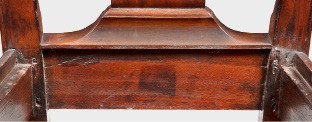
Detail showing the shadow of a label on the rear rail of the chair illustrated in fig. 28. (Photo, Gavin Ashworth.)
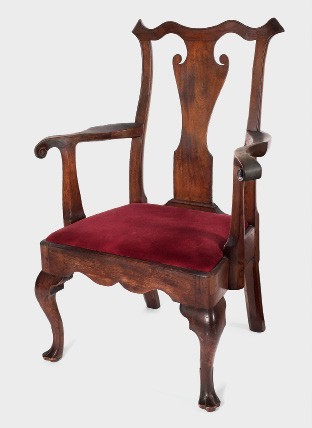
Armchair attributed to William Savery, Philadelphia, Pennsylvania, 1765–1775. Walnut. H. 411/8", W. 30", D. 211/2". (Courtesy, Pook and Pook.)
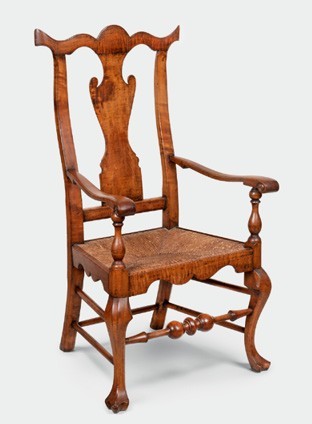
Rush-seat armchair, Philadelphia, Pennsylvania, 1750–1760. Maple. H. 44 5/8", W. 24", D. 171/4". (Private collection; photo, Gavin Ashworth.)

Side chair by William Savery Philadelphia, Pennsylvania, 1780–1787. Walnut. Dimensions not recorded. (Courtesy, Winterthur Decorative Arts Photographic Collection, 76.1036.) This chair has Savery’s eighth label on the inside of the rear seat rail.
